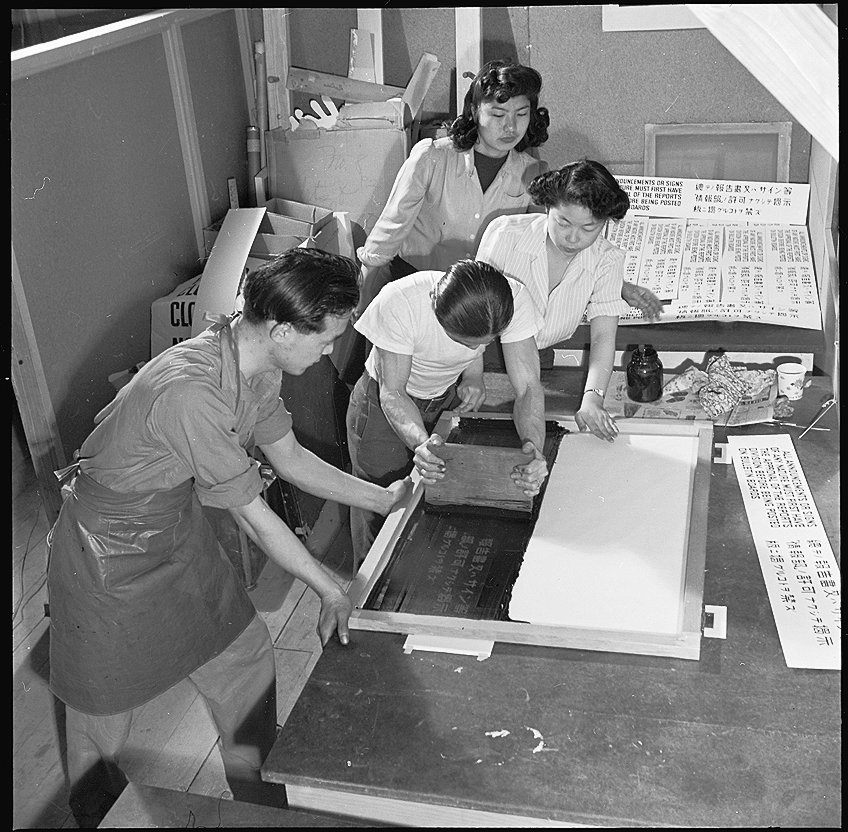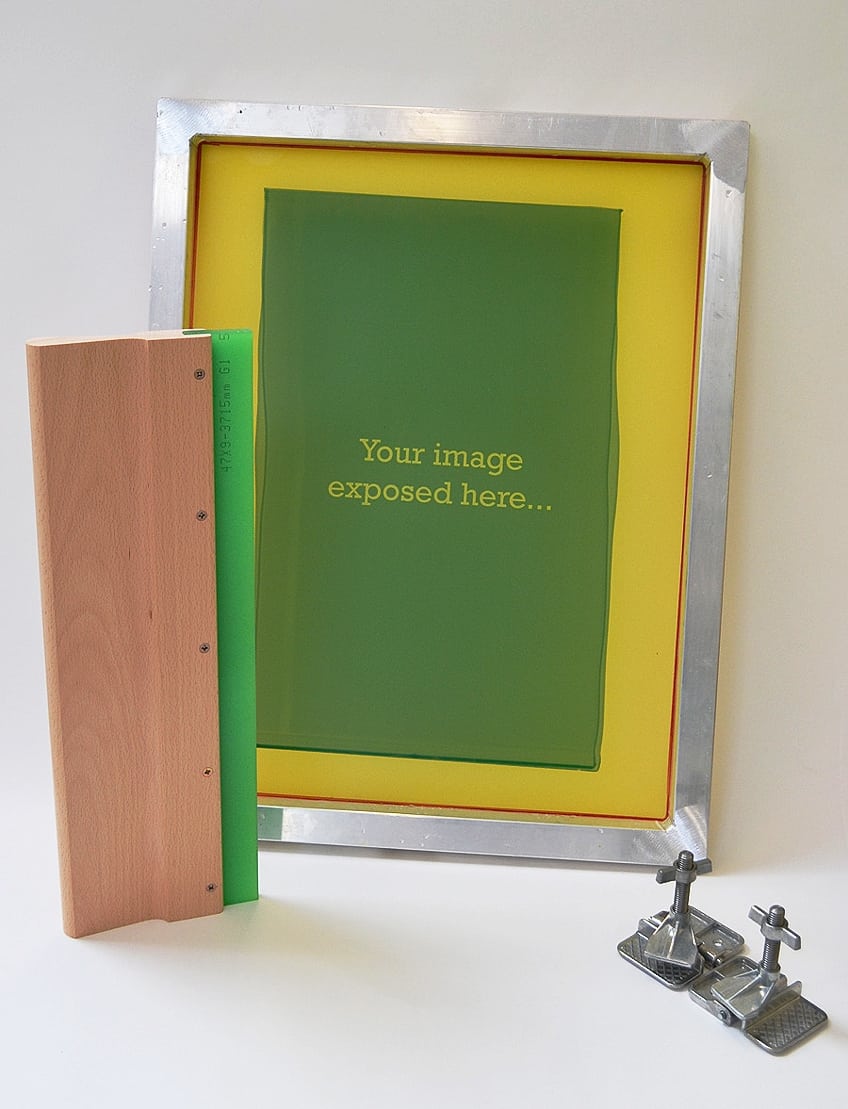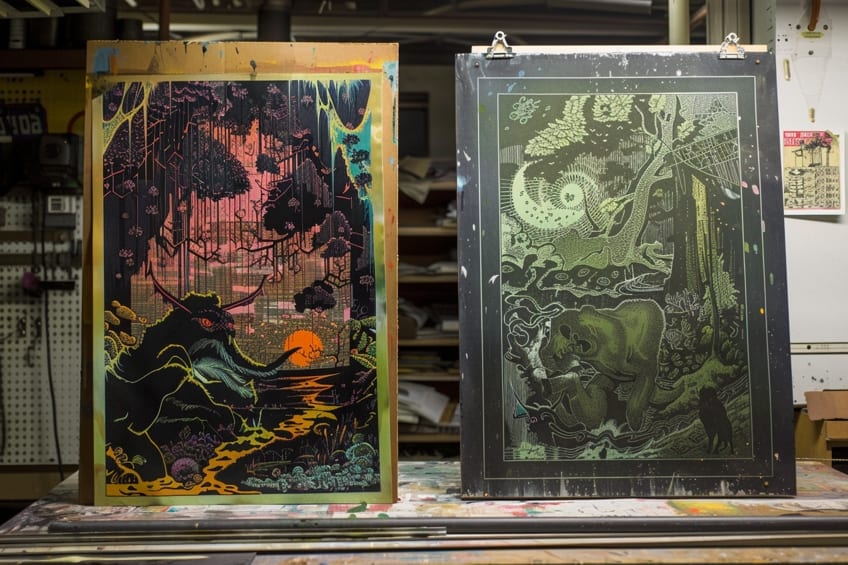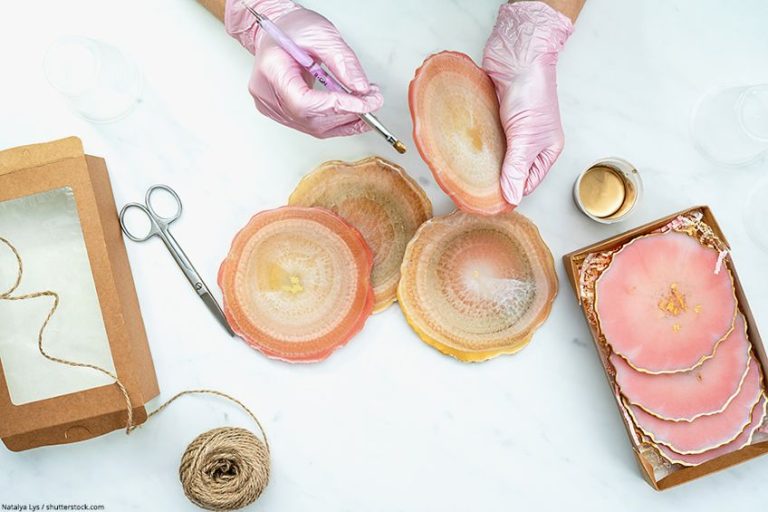What Is a Serigraph? – Silk-Screen Wonders
A serigraph, also known as a silk screen print or screen print, is a type of printmaking technique that involves using a stencil-based process to create vibrant and detailed artworks. Originating in ancient China and later developed in the 20th century as a commercial art form, serigraphy has gained popularity for its ability to produce multiple copies of an image with consistent quality. This method involves transferring ink through a fine mesh screen onto a surface, resulting in bold colors, sharp lines, and intricate designs. Serigraphs are highly valued for their versatility, allowing artists to explore a wide range of artistic styles and produce visually stunning prints suitable for various applications, including fine art, posters, and graphic design.
Key Takeaways
- Serigraphy is a printmaking technique that produces art through ink pressed onto paper via stenciled silk screens.
- Each color layer in a serigraph is applied with a separate screen, allowing for intricate, vibrant designs.
- Signed, limited-edition serigraphs are valued for their uniqueness and the craftsmanship required to create them.

What Is a Serigraph?
A serigraph, commonly known as a screen print, is a method of printmaking that has garnered recognition and respect within the art world for its ability to produce vibrant, detailed works. The term itself originates from a combination of Latin and Ancient Greek, with “seri” indicating “silk” and “graphos” translating to “writing,” a nod to the use of silk in the process. This technique differs from other types of printmaking due to its unique application of ink through a mesh stencil, enabling artists to create complex, layered images with rich textures and colors.
The creation of a serigraph involves pressing ink through a fabric screen with areas blocked off by a stencil.
Each color in the artwork is applied using a separate stencil, layer by layer, to achieve the final image. As a result, serigraphs are characterized by their crisp lines and vivid color palettes. The process, which has been adopted by both fine artists and commercial printers, requires meticulous preparation and attention to detail, distinguishing it from other forms of mass-produced images. Limited edition serigraphs, often signed by the artist, are highly prized by collectors for their originality and the skill involved in their creation. Attributes of a serigraph include:
- Authenticity: An artist’s signature on the serigraph validates its status as a genuine work of art.
- Limited editions: These prints often have a finite number of copies, enhancing their value and collectability.
- Popularity: Renowned artists, notably from the Pop Art movement such as Andy Warhol, frequently utilized serigraphy for its bold and striking results.

Serigraphy has garnered respect within both the fine art and commercial sectors due to its versatility and the quality of work it can produce. The creation of a serigraph is not merely a printing process but an art form that requires a depth of skill and artistic insight.
This method has established its standing as a reputable and sought-after technique among collectors and artists alike.
Understanding Serigraphy
Serigraphy, known commonly as silkscreen printing, is both an art form and a technique that has been embraced by artists to create intricate and vibrant prints. This section will examine the rich history and evolution of serigraphy, delineate the specific techniques and processes involved, and describe the materials and tools integral to the craft.
History and Origins
Serigraphy, or silk-screen printing, originated in China during the Song Dynasty (960 – 1279 AD). This method made its way to Western Europe in the 18th century, but it wasn’t until the 20th century that it became recognized as an art form, separate from its industrial roots. Artists like Andy Warhol catapulted serigraphy to popularity in the 1960s as a cornerstone of the Pop Art movement. Warhol’s use of vibrant colors and repetition of images highlighted both the artistic potential and the commercial connection of the medium.

Process and Techniques
Serigraphy involves creating a stencil on a mesh screen and applying layers of ink through the mesh onto a substrate. Each layer of ink corresponds to a different color in the final design. The process is known for its potential to produce vibrant, bold colors and fine details. Notably, color separation is a pivotal part of the process, requiring meticulous planning to ensure that each layer of color aligns perfectly with the next to create the desired image.
Masters of serigraphy, like Warhol, exploited the medium’s capacity for layering to produce richly textured images.
Materials and Tools
- Silk-screen: Traditionally made of silk, modern screens are often made of synthetic materials.
- Squeegee: A blade or tool made from rubber or polyurethane, used to push the ink through the mesh.
- Ink: Specialized screenprinting inks are required to ensure durability and brightness of color.
- Emulsion: Photosensitive material used to create the stencil on the mesh screen.
Artists must choose the right combination of mesh size, ink opacity, and squeegee hardness to achieve the precise quality of print that serigraphy is known for. This includes maintaining the integrity of fine lines and intricate details. The result when done expertly, is a high-quality, durable work of art that stands out for its clarity and color fidelity.

How Serigraphs Are Made
Creating a serigraph is an intricate process that merges artistic vision with meticulous technique. This method produces vibrant multilayered prints through a series of carefully executed steps.
Serigraph Printing Process
The serigraph printing process begins with the creation of a stencil, which is traditionally a design on a transparent film. Artists then prepare a screen made of fine mesh tightly stretched over a frame. The mesh is typically made of materials such as polyester, and the finer the mesh, the more detailed the print can be.
- Coating the screen: A light-sensitive emulsion or film is applied to the mesh. Once dried, this emulsion reacts with light to create a barrier where the negative space of the design doesn’t harden.
- Transferring the image: The stencil is placed on the screen, and they expose the screen to bright light. The areas of the screen covered by the design remain soft, as they are shielded from the light.
- Washing out: The screen is washed with a strong spray of water. The emulsion in the unexposed areas washes away, leaving behind a clear imprint of the stencil.
- Preparing to print: The artist fixes the screen onto a press. They align the screen over the printing surface, whether it’s paper, fabric, or another material.
- Applying the ink: Ink is placed on the upper side of the screen, and using a squeegee, they press the ink through the mesh openings of the stencil onto the printing surface below.
- Layering colors: For prints with multiple colors, the process repeats for each additional color, with a separate stencil for every color layer. The artist must ensure each layer is perfectly aligned to achieve the desired composite image.
- Curing the print: After the final layer is applied, the print needs to cure. This can mean air drying or using a heat process, depending on the type of ink and printing surface.

Serigraphy demands precision and patience, as each color layer must dry completely before applying the next, making the process labor-intensive and time-consuming. The result is a vibrant piece of art with texture and depth not achievable through other printing methods.
Distinguishing Serigraphs
This section offers insight into the unique characteristics of serigraphs, their differentiation from other printmaking methods like lithographs, and markers that signify authenticity for collectors and art enthusiasts.
Difference Between a Serigraph and Lithograph
Serigraphs and lithographs are both types of fine art prints, each with its distinct processes and characteristics. A serigraph involves ink being pushed through a mesh screen, typically made of silk (hence the name “silkscreen”), onto paper or another surface. Each color in the artwork requires a separate screen, making the process intricate and demanding meticulous registration for proper alignment of the colors.
On the other hand, a lithograph is created on a stone or metal plate with a grease-based image. The stone or plate is then treated with a chemical solution. When ink is applied, it adheres only to the original drawing lines, while the rest of the stone attracts water and repels the ink. This technique allows for detailed and nuanced reproductions of the original artwork. Both serigraphy and lithography have contributed significantly to the world of fine art printing, offering artists versatile methods to produce visually stunning and technically precise prints.
Comparing Printmaking Methods
Serigraphy is a form of printmaking that stands distinct from other methods due to its use of silkscreen technology, contrasting with digital printing or intaglio techniques:
- Digital technology: employs digital images to be printed directly onto the medium, lacking the manual touch present in serigraphs.
- Intaglio: uses incisions in a plate where ink is held and then transferred to paper under pressure.
Serigraphs are considered original artwork when the artist is involved in the process, and are recognized for their limited edition nature, often including a certificate of authenticity (COA).
Identifying Marks of Authenticity
To discern authentic serigraphs, art collectors should look for:
- Signature: Hand-signed by the artist.
- Edition number: Indicates the print’s place in the edition run, e.g., “25/100”.
- COA: A certificate of authenticity, often provided by the artist or gallery.
- Paper quality: High-grade, absorbent paper is typically used.
Printmaking through serigraphy attracts artists who value the high quality and fine art prints it produces. Registration marks may be visible on the print, signaling careful alignment of multi-layered stencils. Authentic serigraphs, especially those released in limited edition, are valuable both as collectibles and investments.

Collecting Serigraphs
Collectors often seek serigraphs for their vibrant colors and textured appearance, appreciating the blend of artistic skill and printmaking mastery. They must consider aspects such as artistic value and preservation methods when adding serigraphs to their collection.
Evaluating Artistic Value
Renowned artists like Peter Max, Josef Albers, and Robert Rauschenberg have elevated serigraph printing to esteemed heights within the art market. When collectors evaluate the artistic value of a serigraph, they weigh the artist’s reputation and the piece’s visual appeal. Art from esteemed regions like China, Japan, and Europe often carry with them a storied tradition, adding to their allure in the art market. Limited editions are particularly valuable, as the restricted number of prints enhances exclusivity.

Collectors should observe the edition size mentioned on the serigraph—smaller editions typically indicate higher value. Documentation, often in the form of a certificate of authenticity, ensures the serigraph’s legitimacy. This is crucial for works on paper, which are more vulnerable to forgery. Assessing the print’s condition is vital; imperfections reduce value. The presence of a fine mesh in the screens used for printing may also guarantee superior quality, which collectors value.
Preserving and Displaying
Protecting serigraph prints with the proper frame can prevent damage and maintain the artwork’s integrity over time. UV-protective glass is a wise choice, as it shields the print from sun damage that can fade colors. A controlled environment—away from direct sunlight and humidity—is essential for preserving the print’s vibrancy and preventing degradation.
Collectors should exhibit serigraphs in stable settings to safeguard their investment.
Although original works by notable artists may be out of financial reach for many, serigraphs offer a more affordable entry point into collecting fine art. They allow enthusiasts to own a piece of artistic excellence without the hefty price tag attached to original paintings. By understanding these nuances, one can build a rich and meticulously curated serigraph collection that stands the test of time and fluctuations in the art market.
Serigraphs in Modern Art
Serigraphs have become a significant facet of modern art, allowing artists to explore the technical potential of screen printing to produce textured, vibrant pieces. This section explores the use of serigraphs by influential figures in modern art and examines how contemporary trends continue to evolve the medium.

Influential Artists and Movements
Prominent artists like Andy Warhol and Roy Lichtenstein revolutionized the use of serigraphy in the art world during the Pop Art movement. Warhol’s iconic series, such as the Campbell’s Soup Cans and portraits of Marilyn Monroe, utilized serigraphy to replicate the mass-produced aesthetic characteristic of consumer culture.
Artists of the Op Art movement, such as Josef Albers, harnessed serigraphy to draw attention to visual perception through precision and exactitude in their geometric compositions.
Contemporary Applications and Trends
Modern serigraphs have expanded far beyond the traditional silk screens to include materials like nylon and other synthetics, offering artists a wider range of textures and effects. Experimentation with layering, ink opacity, and other innovative techniques continue to push the boundaries of serigraphy. A new generation of artists is embracing the inherent opportunities of serigraphy to reflect upon both personal narratives and broader cultural associations.

With a focus on detail and the tactile nature of screen printing, contemporary artists continually integrate serigraphy into their practice, occasionally blending it with other mediums to create original work. The integration of serigraphs in modern art highlights an ongoing interest in the medium’s capacity for repetition and variation, valuing both its historical significance and its adaptability to contemporary artistic exploration.
Serigraphy stands as a dynamic and impactful medium in the realm of printmaking, offering artists a versatile canvas to express their creativity with vibrant colors, sharp details, and intricate designs. From its ancient origins to its modern commercial and artistic applications, serigraphy continues to captivate audiences with its unique aesthetic qualities and ability to produce high-quality prints. As artists and enthusiasts alike embrace the possibilities of this technique, the legacy of serigraphy remains a testament to the enduring allure and innovation within the world of visual arts.
Frequently Asked Questions
How Can One Distinguish a Serigraph from Other Art Prints?
A serigraph can be identified by its textured surface and vibrant colors, results of the hand-applied layers of ink through a stencil on a silk screen. Each color requires a separate screen, making the textural quality distinctive compared to other types of prints.
What Are the Characteristics That Define Serigraph Art?
Serigraph art is distinguished by its rich, opaque colors and the potential for fine detail. The technique allows for a very controlled and even distribution of ink, with an array of special effects that cannot easily be replicated by other printing methods.
In What Ways Are Serigraphs and Lithographs Different?
Serigraphs and lithographs differ mainly in their printing techniques; serigraphy uses a screen and stencil process allowing for bold, color-saturated images, while lithography involves drawing directly onto a flat stone or metal plate with a greasy substance. Lithographs tend to have a softer look and can sometimes capture the subtle gradations of a hand-drawn work.
Isabella studied at the University of Cape Town in South Africa and graduated with a Bachelor of Arts majoring in English Literature & Language and Psychology. Throughout her undergraduate years, she took Art History as an additional subject and absolutely loved it. Building on from her art history knowledge that began in high school, art has always been a particular area of fascination for her. From learning about artworks previously unknown to her, or sharpening her existing understanding of specific works, the ability to continue learning within this interesting sphere excites her greatly.
Her focal points of interest in art history encompass profiling specific artists and art movements, as it is these areas where she is able to really dig deep into the rich narrative of the art world. Additionally, she particularly enjoys exploring the different artistic styles of the 20th century, as well as the important impact that female artists have had on the development of art history.
Learn more about Isabella Meyer and the Art in Context Team.
Cite this Article
Isabella, Meyer, “What Is a Serigraph? – Silk-Screen Wonders.” Art in Context. March 25, 2024. URL: https://artincontext.org/what-is-a-serigraph/
Meyer, I. (2024, 25 March). What Is a Serigraph? – Silk-Screen Wonders. Art in Context. https://artincontext.org/what-is-a-serigraph/
Meyer, Isabella. “What Is a Serigraph? – Silk-Screen Wonders.” Art in Context, March 25, 2024. https://artincontext.org/what-is-a-serigraph/.









